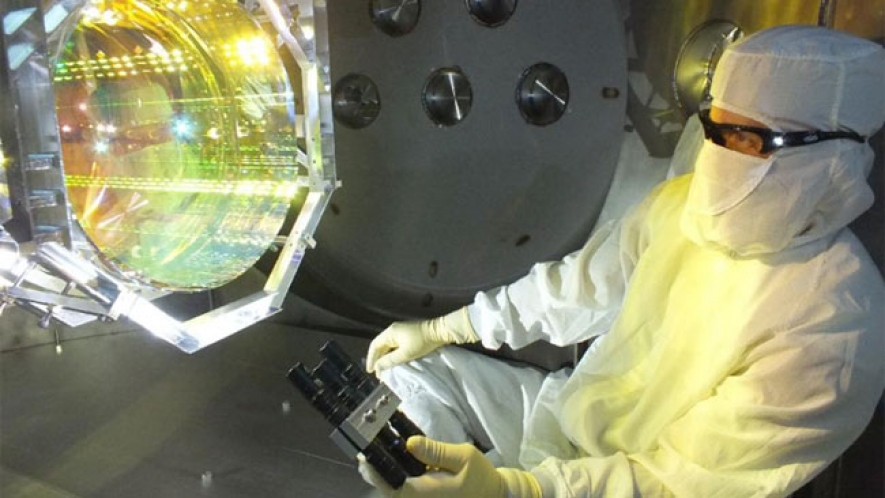When two black holes collided some 1.3 billion years ago, the joining of those two great masses sent forth a wobble that hurtled through space and arrived at Earth on September 14, 2015, when it was picked up by sophisticated instruments, researchers announced.
"Like Galileo first pointing his telescope upward, this new view of the sky will deepen our understanding of the cosmos, and lead to unexpected discoveries," said France Cordova, director of the US National Science Foundation, which funded the work.
The phenomenon was observed by two US-based underground detectors, designed to spot tiny vibrations from passing gravitational waves, a project known as the Laser Interferometer Gravitational-wave Observatory, or LIGO.
It took scientists months to verify their data and put it through a process of peer-review before announcing it on Thursday, marking the culmination of decades of efforts by teams around the world.
"LIGO has ushered in the birth of an entirely new field of astrophysics," said Cordova.
Gravitational waves are a measure of strain in space, an effect of the motion of large masses that stretches the fabric of space-time -- a way of viewing space and time as a single, interweaved continuum. They travel at the speed of light and cannot be stopped or blocked by anything.
Einstein said space-time could be compared to a net, bowing under the weight of an object. Gravitational waves would be like ripples that emanate from a pebble thrown in a pond.
While scientists have previously been able to calculate gravitational waves, they had never before seen one directly.
According to the Massachusetts Institute of Technology's (MIT) David Shoemaker, the leader of the LIGO team, it looked just like physicists thought it would.
"The waveform that we can calculate based on Einstein's theory of 1916 matches exactly what we observed in 2015," David Shoemaker, the leader of the LIGO team, told AFP.
"It looked like a chirp, it looked at something that started at low frequencies -- for us low frequencies means 20 or 30 hertz, that's like the lowest note on a bass guitar, sweeping very rapidly up over just a fraction of a second... up to 150 hertz or so, sort of near middle C on a piano."
The chirp "corresponded to the orbit of these two black holes getting smaller and smaller, and the speed of the two objects going faster and faster until the two became a single object," he explained.
"And then right at the end of this waveform, we see the wobbling of the final black hole as if it were made of jelly as it settled into a static state."
The L-shaped LIGO detectors -- each about 1.5 kilometers (four kilometres) long -- were conceived and built by researchers at MIT and Caltech.
One is located in Hanford, Washington, and the other is in Livingston, Louisiana. A third detector, called VIRGO, is scheduled to open in Italy later this year. Tuck Stebbins, head of the gravitational astrophysics laboratory at NASA's Goddard Spaceflight Center, described the detectors as the "most complex machines humans have ever built."
- AFP



















